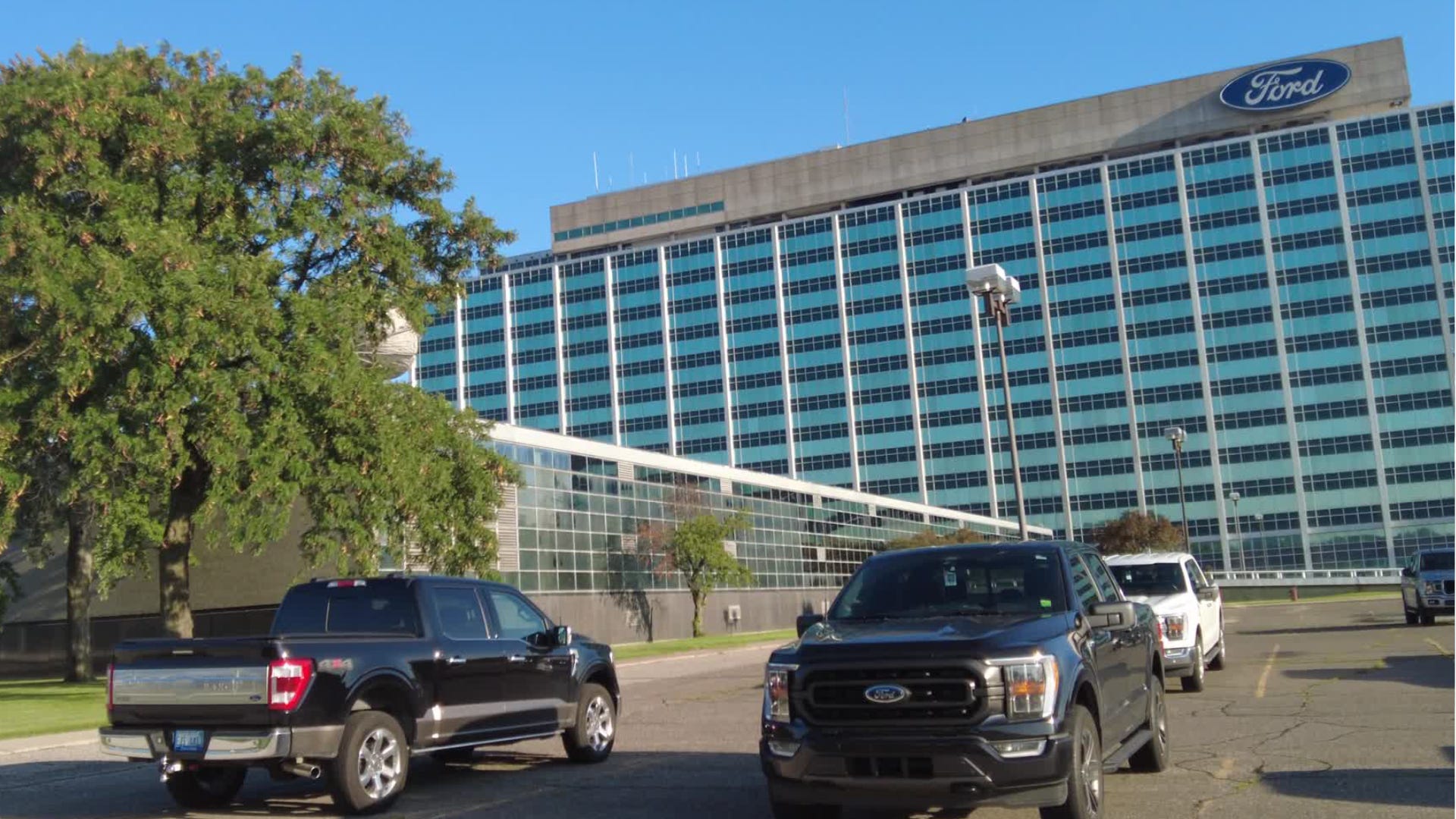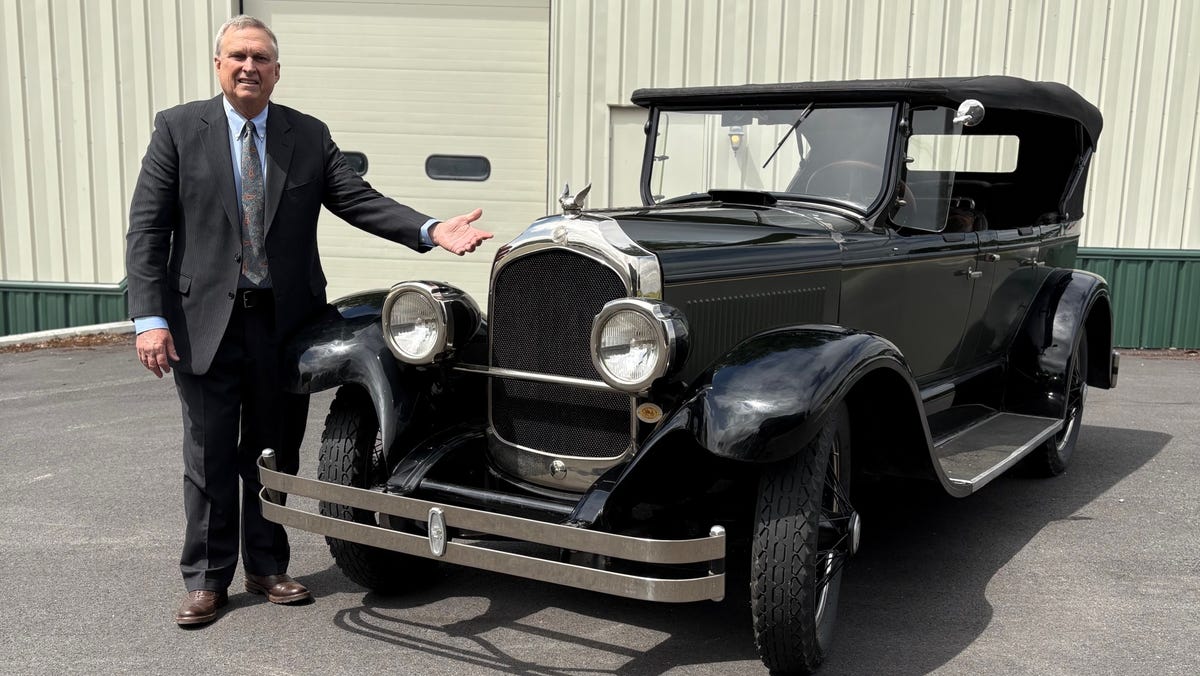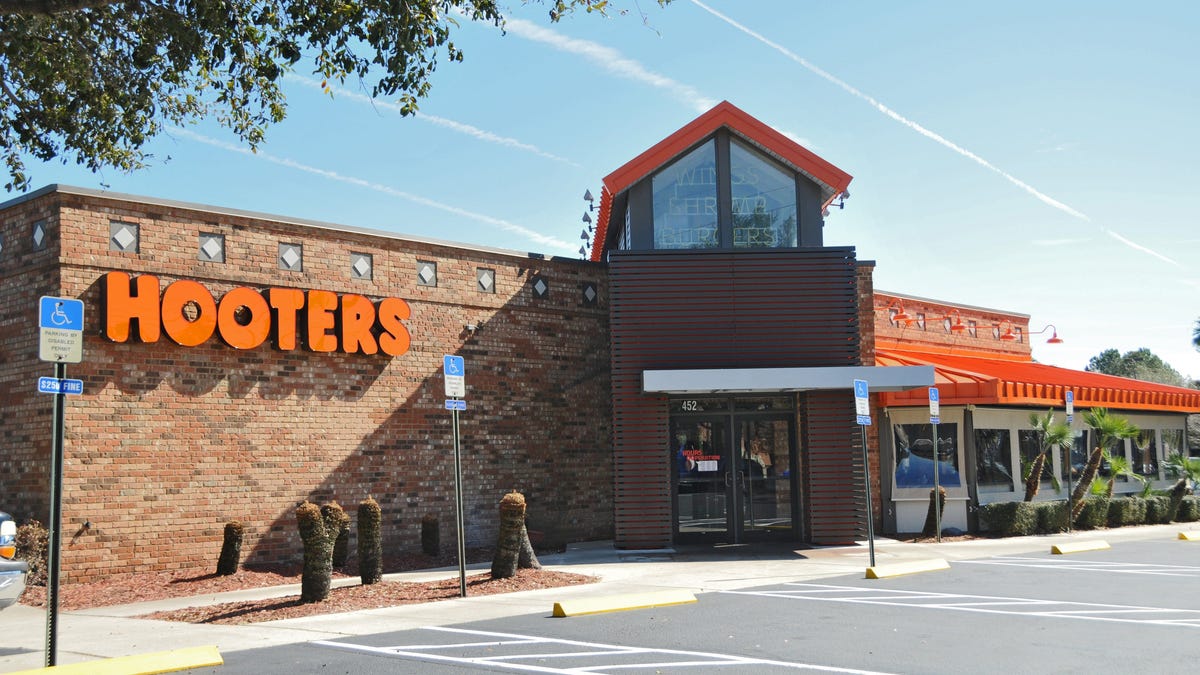
Ford Motor Company: Understanding the automaker’s history, legacy
Explore the rich history of Ford Motor Company, from its groundbreaking assembly line innovations to iconic cars like the Model T, Mustang, and F-150.
- The Henry Ford Museum is hiring an antique vehicle mechanic to maintain its fleet of historic vehicles.
- The position requires mechanical skills and a passion for sharing automotive history with the public.
To be authentic to the history it depicts, The Henry Ford museum in Dearborn, Michigan at times needs people with distinct and even rare skills.
In a job posting in late April, the museum wrote: “Now hiring: We are seeking qualified applicants to fill the one-of-a-kind role of antique vehicle mechanic at The Henry Ford! This full-time position oversees operation, inspection, repairs and preventative maintenance on operating historic land vehicles dating from 1914 to 1953.”
The job, which according to The Henry Ford’s website pays $29.23 an hour, is definitely rarified, though the profession of auto restoration is growing in popularity. A job such as this one not only requires the person to have the mechanical skills to do constant repairs on a large fleet of very old cars, when most modern service technicians work on vehicles that are actually computers on wheels, but it also requires a person who has a little panache.
“At The Henry Ford, to work on the cars and be a part of it, you have to understand that you’re helping other people experience it and enjoy that passion for it,” said Brian Martin, director of the auto restoration program at McPherson College in Kansas. “So being able and willing to do some work in front of people, such as change a flat tire, and explain what you’re doing and why, that takes a personality that likes people and sharing your interest with other people.”
A spokesperson for the museum said it did find a qualified applicant who accepted the job, but they have not yet started. She said the museum regularly seeks to hire part-time seasonal mechanics as well.
The current fleet
Martin would know what’s needed to the job. He worked as a mechanic intern at The Henry Ford for the summers of 2003 and 2004 when he was still a student at McPherson. The four-year liberal arts college in McPherson, Kansas, about 50 miles north of Wichita, is the only school in the nation to offer a bachelor’s degree in automotive restoration. The Henry Ford has hired many McPherson graduates over the years to service the antique cars, including its current mechanic.
“It’s a very niche thing,” said Jim Johnson, director of Greenfield Village and curator of Historic Structures and Landscapes at The Henry Ford. “We’ve had several graduates over the years who’ve worked with us and they’re very sought-after when they come out of the program because they have amazing skills. So whatever car they’re confronted with, from the early teens to the 1970s, they can restore the car to its specifications.”
The Henry Ford has two full-time staffers to care for the fleet, one of whom is a mechanic, plus “a big gang of volunteers who come in to help with polishing cars and with simple repairs,” Johnson said.
But it’s not enough, considering the size of the fleet, which is why Johnson wanted to hire another full-time mechanic.
Before 2003, The Henry Ford had only two Model T’s to give guests rides at Greenfield Village. But as the Ford Motor Co. centennial celebration approached in June 2003, a massive renovation at the village included the installation of a new street system. That allowed the museum to start expanding the number of Model T’s and other antique vehicles it owned.
Johnson said the museum now has 13 Model T’s from 1914 to 1927 model years. Most of them have wooden frames, though Ford was one of the first manufacturers to build vehicles with all-steel bodies in 1923, Martin said.
Those 13 Model T’s carry visitors around the villlage grounds, typically doing six to eight runs a day seven days a week, he said. Four of the Model T’s are replicas made in recent years, but the others are original vintage, Johnson said. The Henry Ford also owns a fleet of nine Model A trucks ranging from 1928 to 1931 model years.
“We use those for all the work we do in the village such as hauling things, setting up events. The Ford barn uses one to service that barn or move the horses around,” Johnson said. “Any work during village hours, we use historic vehicles to do that.”
The village has two 1929 Model A cars as well that are used by its security staff, he said, as well other historic vehicles. The entire fleet numbers about 27 vehicles, most of which are heavily used and in need of almost constant care or repair, Johnson said.
“It is important to hire someone because the cars are in huge demand, not only to fulfill the daily tours, but we have private tours and events … so there is a wide range of needs,” Johnson said. “They are driven in winter, too, so they are exposed to harsh weather and salt.”
The ‘sensual experience’ of driving a Model T
Martin, who helped get the fleet of Model T’s going at The Henry Ford in 2003, learned to drive, repair and maintain a Model T at that time. And driving is a feat not for the faint of heart.
The accelerator is a lever on the right side of the steering column, explained Johnson. There are three pedals on the floor, with the far left pedal controlling the gear you are in, so when you press it all the way to the floor, you move forward. The middle pedal is reverse and the far right pedal is the brake.
“There’s a lot to think about, and if you have an emergency stop, you have to know what to do to keep the car from stalling,” Johnson said. “Once you master it, it’s easy to do.”
Martin said the cars, which all have electric starts, generate about 20 horsepower with a comfortable top speed of 35 mph to 40 mph. Still, driving one can be life-changing, he said.
“You’re controlling the ignition and driving the throttle by hand and shifting with your feet, so you’re actually driving by sound and feel as much as anything,” Martin said. “So driving a Model T is a very sensual experience because you’re driving the car and making the car work at its best by sound and feel.”
If you think that’s hard, Martin explained how to change a flat tire on a Model T: Put the car up on a jack, leave the wheel attached to the car, but peel the tire and inner tube off. Find the hole in the inner tube, patch it or replace the tube, then restretch the tire back onto the wheel. Inflate the inner tube up to pressure, then bring the car off the jack.
Despite the extra work, Martin said the experience of learning to drive and work on Model T’s at the museum inspired him to buy a Model T in 2012. He has turned that into his daily car now to drive to and from work and all around McPherson, Kansas.
“There’s a lot of joy in driving a Model T,” Martin said. “Everyone learns about Model T’s in school, so when they see one out in the wild, they recognize it and enjoy it. When I go to Walmart, people take pictures of it and kids crawl in it.”
A Model T personality
Martin said historic vehicles are best appreciated by using them, but using them does shorten their lifespan if they are not constantly coddled.
“In the confines of using it the way they do in the village, it’s a lot of general maintenance, and Model T’s are notorious for each having its only personality,” Martin said. “So you had to learn its quirks — both to drive them and mechanically to maintain them. You had to know what their little problems were to keep an eye on and you’re always looking to do preventative maintenance. At the end of the day, it is a museum and these are working artifacts.”
The good news for The Henry Ford is that in the past 15 to 20 years, the profession of restoring classic cars has been growing, Martin said. He has seen it in enrollment at McPherson.
“The size of our program has more than doubled in the last 15 years,” Martin said. “In 2002, when I started, there were only 28 students in the restoration program and now there’s 175.”
Of the 175 students, 16 are women, he said. The school has had to expand its curriculum as well to help fill the void in the automotive market and collector car world. Martin said the program teaches restoration technology, restoration management, which is coupled with the business program, restoration history, restoration communications for those who go into journalism, design work or auction house work and restoration design, which is partnered with the fine arts department for people who use cars for photography, painting or other fine arts.
“Our graduates go to all different parts of the collector car world,” Martin said. “We used to just create mechanics, now we create journalists, collector car insurance professionals, managers … it’s an endless list.”
A career, not a hobby
For those pursuing this profession, it isn’t just a job, it is a career. For Martin, he said it was a calling.
“I loved history and I loved mechanical things,” Martin said. “Because of my experience at the Ford Museum … I realized you could do a lot more with cars then ever imaginable.”
Most of those who opt for a bachelor degree in automotive restoration are people who have an inclination for mechanical engineering, but who want to work with their hands, he said.
“They’re the weird car guy that’s really a car guy, not a, ‘Oh, I like cars’ guy,” Martin said. “There’s a real difference between: ‘Let me go walk around the car shows on Sunday’ versus, ‘I’m planning my whole weekend around working on a car.’ It’s a lifestyle.”
The career can provide a stable living too. Martin said, depending on the job and geographical location, a job in the automotive restoration profession can start at $30,000 to $40,000. He knows many people making well into the six-figure salary especially in the collector car world.
“It has adapted recently because the antique car world has exploded in the last 15 years. So I think it is a higher number,” Martin said. “I have shops that hire students at $15 to $20 an hour, they don’t keep them very long. But there are others that start them at $45,000 a year and as they gain experience, it goes up.”
Fortunately, Martin believes The Henry Ford will have no problem finding a new mechanic, in part due to its name recognition and also because of the profession’s growing popularity. The challenge the museum faces is that it is now a highly competitive market.
“In our career fair last February, there were 200 job openings in this for the 40 students we were graduating,” Martin said.
Jamie L. LaReau is the senior autos writer who covers Ford Motor Co. for the Detroit Free Press. Contact Jamie at jlareau@freepress.com. Follow her on Twitter @jlareauan. To sign up for our autos newsletter. Become a subscriber.










